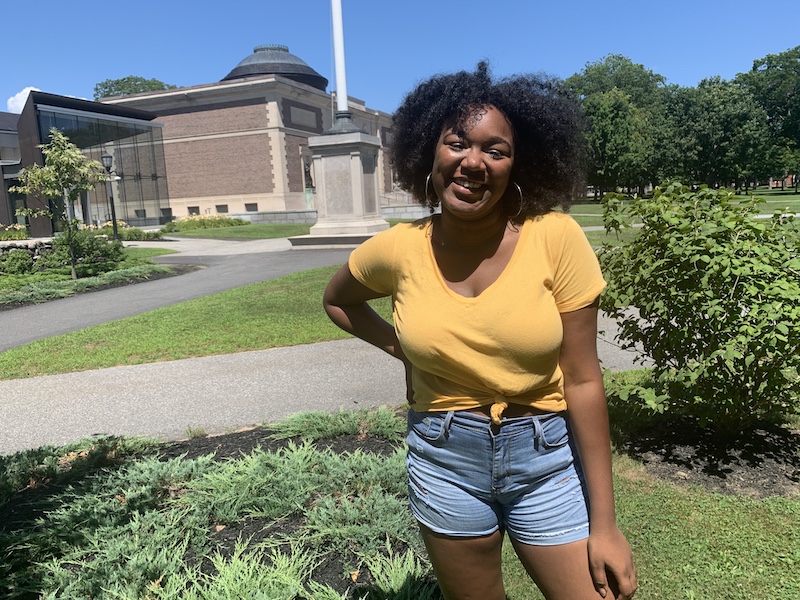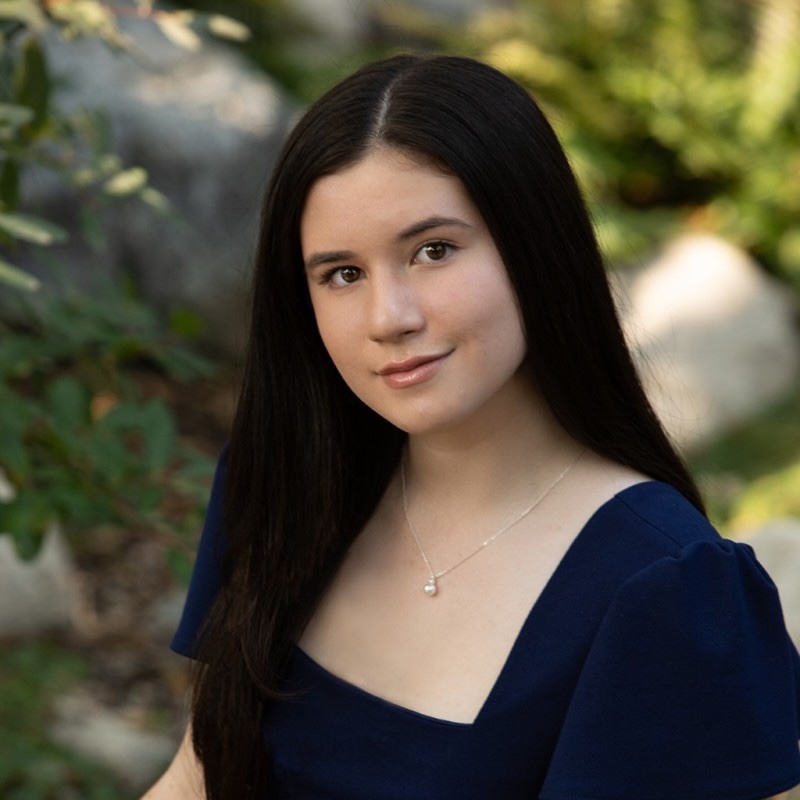Destiny Kearney ’21: Black Representation in the Teaching of Visual Arts
By Rebecca Goldfine
"I always say the best way for me to explain my project is by giving the background to it," Kearney said recently. This summer she has an Irma Cheatham Summer Research Fellowship from Bowdoin to investigate "Black representation in the teaching of visual arts." She's using the College as her case study.
"It started with a situation I had in my sophomore year, in drawing class," she began. "I was the only Black student in my class. Everything was fine—we were learning linear perspective and still life—but then we got to portraiture."
She diligently practiced her portraiture techniques by studying white plaster busts and sculptures in the museum, as well as drawing other students taking the course.
"I was continuously drawing white students," she said. So when it came time to draw herself, she found it painfully difficult to capture the texture of her hair and the shade of her skin. "I would say, 'hmm, this doesn't look like me.' And that didn't sit right with me."
Additionally, when she looked at other students' portrayals of her she noticed that while they could draw her facial features, they had a hard time with her hair and skin. She got into the habit of styling her hair before class in ways she thought might make it easier for them.
She observed this phenomenon playing out at least one other time, as well. In a session where a Black model was invited to pose for the class, she saw that her peers spent more time rendering his clothes than attempting to depict the play of light and shadow on his skin. She thought: "If a student is trained to do this, you wouldn't see that hesitancy."




These experiences made her question how student artists are taught, and the ways in which some fundamental aspects of arts curricula are based on a Eurocentric point of view. "My liberal arts education influenced my thinking: So I went through this, but what does it really mean?"
Last summer, she was selected for the Mellon Mays Undergraduate Fellowship program and began digging into the subject of how race is incorporated into the teaching of the arts.
This summer, she is continuing her work by exploring Bowdoin's archives to uncover the history of art at the College. Special Collections scanned more than 500 pages of documents related to her interest for her to read at home. "My research is focused on the twenty-first century, but I want to know everything that happened before," she explained.
Though art has been a critical part of the College since its founding—James Bowdoin III donated his collection to the school in 1811, after all—the first art history class wasn't offered until 1912, according to Kearney's research. That class covered ancient and medieval art up through the Renaissance and modern art. "They valued the teaching of European art," she pointed out. In the 1980s, the art history department expanded its classes to include courses on African and Asian art.
Now that she is familiar with the foundations of art at Bowdoin, Kearney plans to interview alumni, old and young, about their experiences in the art department. Her work will turn into an honors project for the Africana studies department, which is one of her majors, along with art history and the visual arts.
Beyond writing a thesis, she plans to curate an art show with an opening on campus next spring. Holding a public exhibition will allow her to share her findings with a bigger audience and perhaps make a bigger impact. "I think this is groundbreaking and important work, and something people overlook," she said.
Jen Scanlon, Bowdoin's dean for academic affairs, agrees: “Destiny’s own work invites her audiences to feel, variously, joy, pleasure, and affirmation. Her oral histories and curatorial work, informed by a close reading of Bowdoin’s past, will help us place the College, and its practices in the arts, in a meaningful and instructive context.
Carrie Scanga, associate professor of art and chair of the visual arts department, said her department "has been supportive of Destiny contacting Bowdoin alums, and we look forward to hearing her findings. We enthusiastically support the artwork and research she intends to complete for her honors project and look forward to visiting her exhibition."
In the end, Kearney hopes both her thesis and her show will present a convincing argument that broadening Black representation in the visual arts benefits all students.
"How do you capture Black skin in painting? How do you capture Black skin in charcoal? Those things are super important, not just for Black students but for everyone," she said. "If someone asks me to draw them or create a portrait, I want to capture the best likeness I can."
She also doesn't see her work ending with her passing in her honors project next spring. Rather, she imagines a possible future role for herself introducing what she describes as culturally relevant pedagogy to art classes well beyond Bowdoin.
"I've always had this drive to use my experiences to try to make better experiences for other people," she said.



